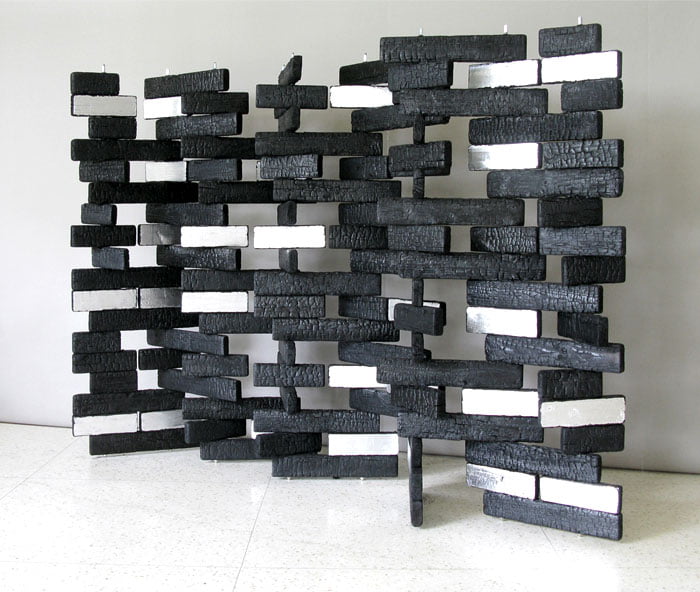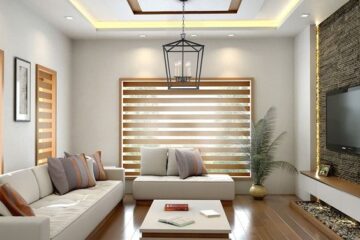Taeg Nishimoto uses burning wood to make a charred texture, a traditional technique developed in Japan and other parts of the world. Depending on the kind of wood and the length of exposure to the burning process, it brings unique jet black texture on the wood surface which is only possible by burning. This room divider uses 2 x 4 white pine lumber, the most common construction material, as the basic element of this exploration in light and texture. Two different lengths of cut lumber, one is 48 cm and the other is 27 cm long, were burnt to create the charred texture and covered with protective sealer.



The short pieces have silver leaf applied on one side of the surface that was not burnt, and reveal the subtle wood grain. Each piece is drilled with holes that accommodate the metal rod inside to hold them vertically together. Two long pieces and two short pieces, combined vertically off-set, make one unit, and these units are stacked up in zig-zag formation to create the free standing panels. The long pieces at the top and the bottom of the unit work as the structure to connect to the adjacent unit in the stacking formation. The short pieces in the middle rotate individually at the central spine of the metal rod. As the conditions change in space in terms of the light and the amount of transparency desired, one can rotate these short pieces to reveal either the charred side or silver leafed side, or hold them in a position to make panels more transparent or opaque.


These alternating silver and charred patterns can also be manipulated to create visual interest in space, either in a geometric or a randomly composed pattern. The zig-zag formation is made either as a conventional divider or modified to create different configurations and effects, including making a corner. The multiplication of units can be of any width horizontally, and the height of the divider can also be determined based on the repetition of units vertically according to the spatial needs. (The one shown here is 160 cm high.)

The light and shadow pattern embedded within the surface of the charred texture, as well as the reflection of light on the silver leaf side either from the natural light during the day or lighting fixture at night, give this free standing object an ever-changing presence in space.





